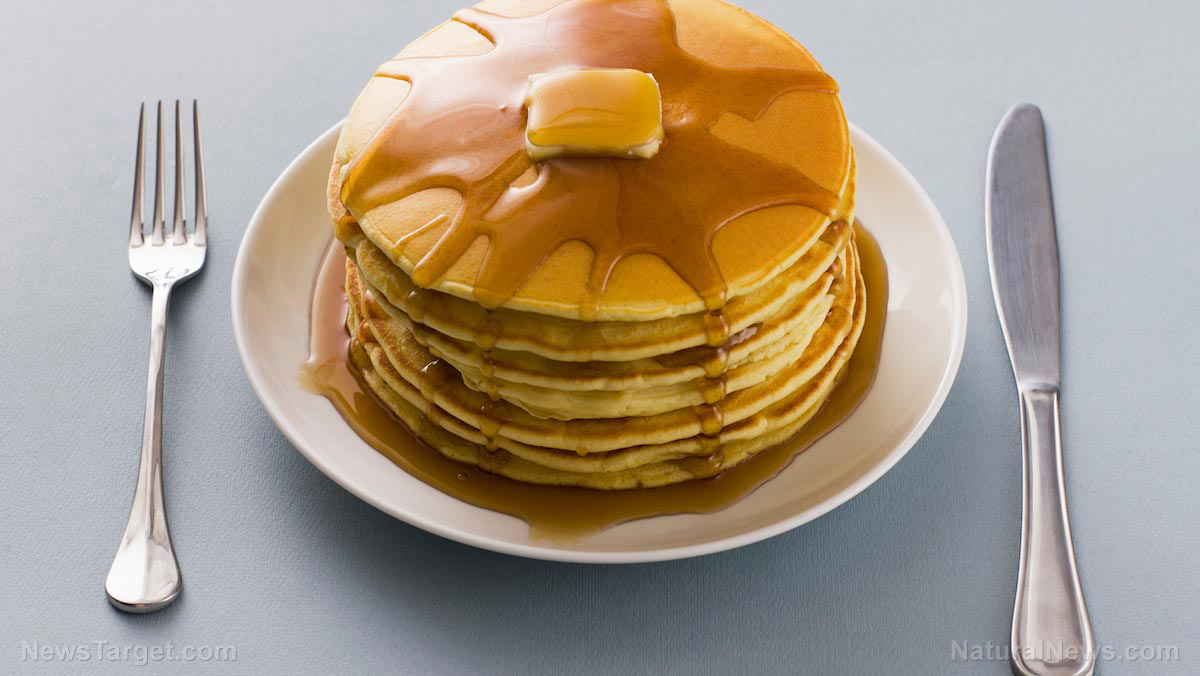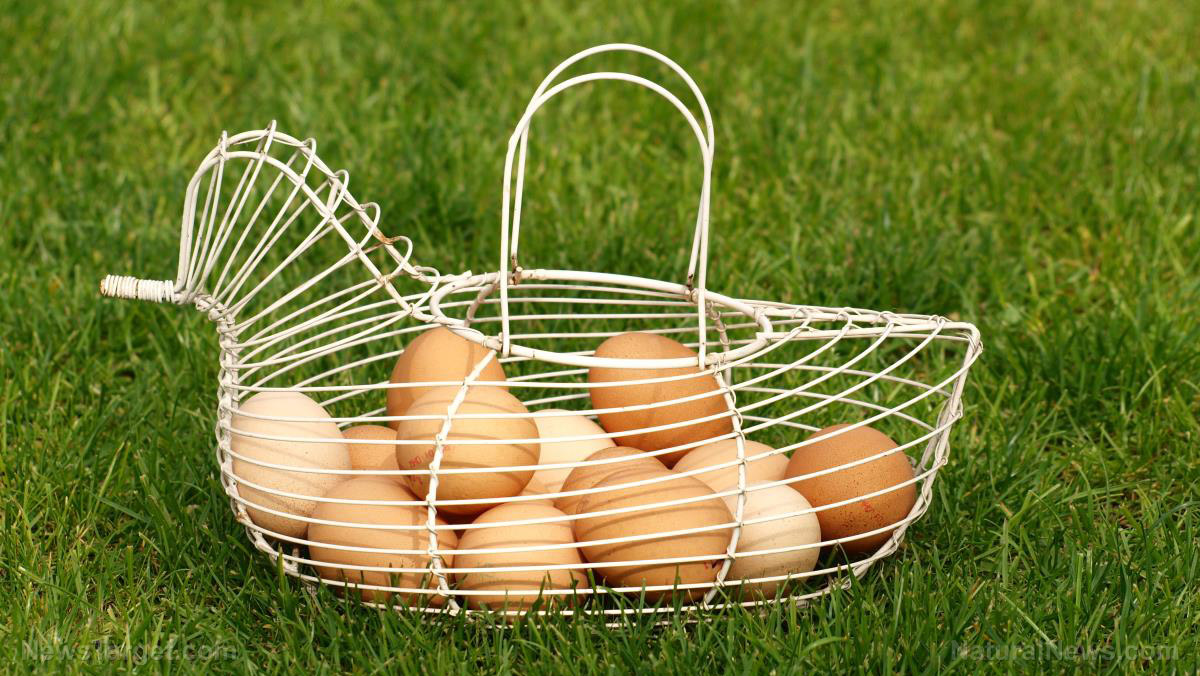Top 10 edible flowers that are good for your health
08/25/2015 / By Carol Young

If you’ve ever been served a plate of salad in a restaurant with a few flowers scattered through it, you can be forgiven for thinking the flowers were merely a pretty garnish. Even though they are certainly pleasing to the eye, the truth is that some edible flowers bear many of the same health benefits as other parts of plants. There are a lot of flowers out there, but not all of them are beneficial or even safe to eat, so here is a look at the top 10 edible flowers that are actually good for your health.
Rose
Among all of the edible flowers out there, the rose is one of the most popular. Many people have already tasted various foods flavored with rose, such as rose water, rose tea and rose jelly. This is more than an elegant addition to a dish; it can actually help your body in a number of ways.
Rose hips, which are the base of the flowers, can be used to manage arthritis, indigestion, fevers, constipation and urinary problems. Rose petals are rich in a number of vitamins, including vitamins A, E, C, D and B3. Rose petals are also full of antioxidants. Many people like to brew the petals into tea, which has been reported to help people relax and relieve stress and headaches.(1,6)
Tree peony
The tree peony, which is native to China, is more than just beautiful to look at. It actually carries with it a host of healing properties. Tree peony can be added fresh to salads or you can boil the petals and make a tea. The tree peony holds a host of benefits, especially for those with high cholesterol or diabetes.(2)
This flower has one of the highest concentrations of phenolic compounds, which are anti-inflammatory and may reduce the risk of certain cancers as well as heart disease.(3)
Japanese honeysuckle
The Japanese honeysuckle already enjoys immense popularity as a Chinese medicinal herb. It grows wild in the U.S., but it’s important to keep in mind that there are many different species of honeysuckle with varying levels of safety and benefits.
The yellowish flower petals of the honeysuckle have a sweet honey-like flavor. Keep in mind that only the flowers are edible; the flower’s black berries are actually highly poisonous so proceed with care. The flower has been reported to help with issues such as depression, flu, tick bites, blood impurities, infections and even gout. The flower can also be made into syrup or pudding and their antioxidant properties can help protect against chronic disease.(2)
Dandelion
Even those who may balk at the idea of eating flowers have probably had a dandelion or two cross their plate at some point in life. The dandelion flower grows in abundance in both urban and rural environments. Dandelion has been studied for its phytochemical and pharmocological properties, and is also known as a useful diuretic, anti-inflammatory, anti-oxidative, anti-hyperglycemic and prebiotic flower.(3,4)
Many people think that dandelion has a distinctively bitter taste, but it can actually taste sweet and honey-like if it is picked when it’s young. It can be eaten raw on its own but it’s more commonly mixed into salad. It can also be steamed or made into wine, jam or syrup. It is said to help with water retention and is best known for its diuretic properties, but it can also be used to treat constipation and skin issues such as acne.(2,6)
Clover
If you’ve ever seen a meadow, chances are you’re already familiar with the clover flower. This unassuming-looking flower is actually quite powerful when it comes to improving your health. Its sweet, anise-like taste makes it amenable to a number of preparations, the most popular of which are serving it raw in salad or using it to make a tea. Only the brightest and healthiest flowers should be used; it can taste very bitter once it starts turning brown.(2,5)
Native Americans use the flower for colds and coughs, and it is also believed to help with a condition similar to varicose veins known as venous insufficiency. It is also reportedly helpful with uterine fibroids and hot flashes, and it has some blood-thinning properties.(2,5)
Borage
Have you ever heard that there isn’t any type of food that is truly blue in color? Well, anyone who says that has clearly never tasted the borage flower. Borage is so strongly associated with well-being that it is actually known as the “herb of gladness”. Its flower is full of fatty acids and GLA. It can help those with depression and is also good at regulating metabolic and hormonal systems. It is often used for atopic dermatitis, arthritis, heart ailments, diarrhea and fever. In addition, it can help with health issues such as lupus, MS, menopause, bronchitis, the flu, auto-immune diseases and sore throats.(2,6)
Borage blossoms have a refreshing taste that is similar to that of cucumber, making it a perfect addition to cold soups, dips, sorbets and lemonade.(2)
Chamomile
If you’ve ever sipped a cup of chamomile tea to relax or calm an upset stomach, you’re already aware of just how soothing chamomile can be. Like dandelion, it’s a member of the daisy family, and the flower has a flavor that may remind you of apples. You can munch on a few raw flowers or dry them and use them to brew a soothing tea. Some of its health benefits include relief from bloating, ADHD, insomnia and stomach ailments. However, those who are allergic to ragweed are advised to avoid chamomile.(2)
Violet
Violets are as pleasing to the eye as they are to the palate, which is why they can sometimes be found crystallized in sugar as a garnish on dessert or scattered through a gourmet salad to add some color. You might have even seen them mixed into cold drinks and cocktails.
Violets have a sweet, fragrant flavor and they can be consumed raw or cooked; they are particularly good when sauteed like spinach. They can help with a headache or cough and are even known to relieve pain, particularly the esophageal variety.(2)
Marigold
Marigold’s cheerful orange color makes for a pretty sight when it crowns a dish of pasta or rice, and its peppery taste is pleasing in eggs and soups. It can also be used in place of saffron. Also known as calendula, marigold is known to help heal skin and reduce inflammation, helping cuts, wounds, eczema and ulcers.(2,5)
Saffron
You’re probably already familiar with saffron’s ability to infuse food with color and flavor, especially if you’ve ever tried paella. However, its abilities stretch far beyond enhancing exotic dishes.
This flower is rich in minerals such as calcium, potassium, iron, copper, zinc, magnesium, manganese and selenium. It also has a number of vitamins such as niacin, folic acid, and vitamins C and A. It has traditionally been used as an antidepressant, antioxidant and antiseptic. However, it is important to note that pregnant women should avoid saffron because it can stimulate the uterus and possibly cause miscarriage.(6)
Of course, there are a few caveats that come with eating flowers. Because there are so many different varieties and many of them look alike, you need to be completely sure that you know exactly what you are eating before you put it into your mouth and ensure that it is edible.
Like fruits and vegetables, flowers could contain pesticides and other dangerous chemicals if they were not grown organically. Moreover, you should not eat flowers that come from florists or have been in floral arrangements. Flowers are best when they are picked in the morning when their water content is highest. Be sure to wash them well before eating them.
To read more about clean and edible foods like flowers, visit CleanFood.news
(1) DailyMail.co.uk
(2) Blogs.NaturalNews.com
(3) ScienceDirect.com
(4) Telegraph.co.uk
(5) ZoomHealth.net
(6) Medindia.net
Submit a correction >>
Tagged Under:
edible flowers, functional food, health benefits, vegetarianism
This article may contain statements that reflect the opinion of the author
RECENT NEWS & ARTICLES
COPYRIGHT © 2017 TOP 10 GROCERY SECRETS





















